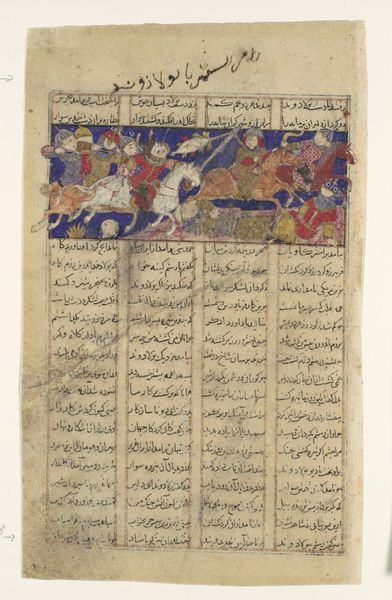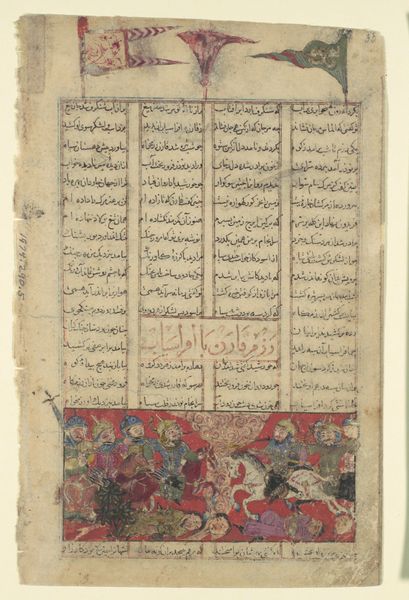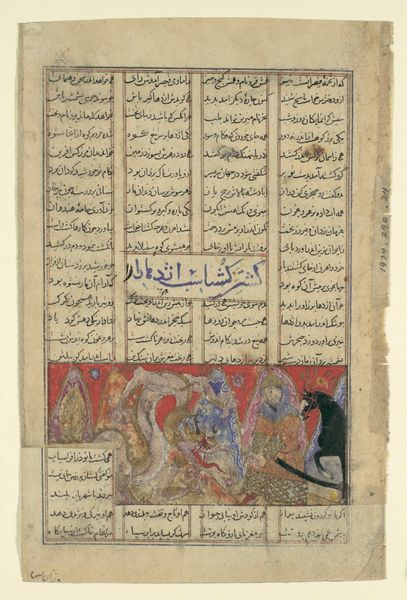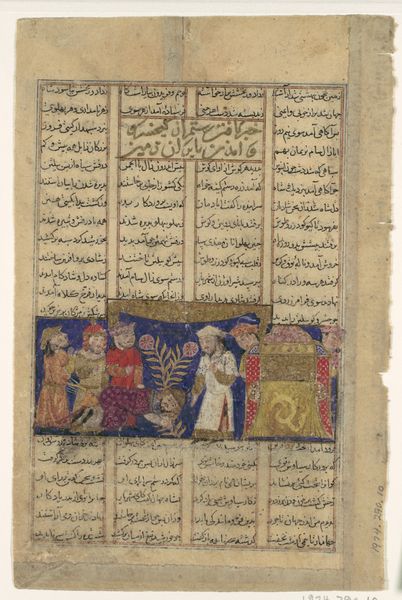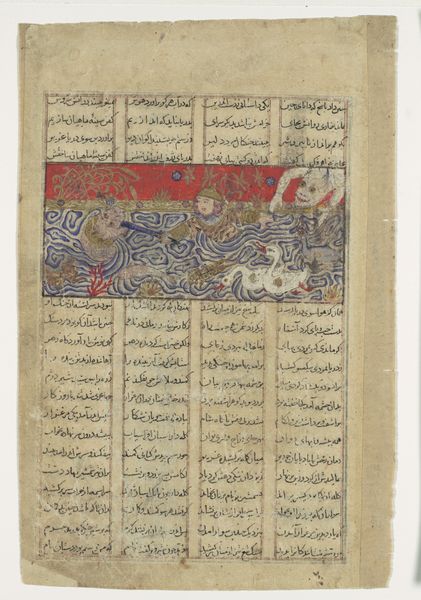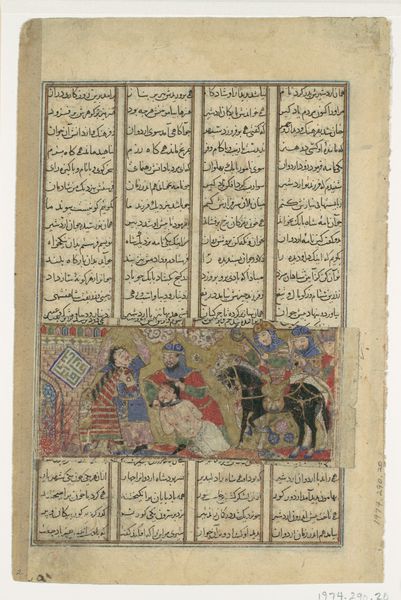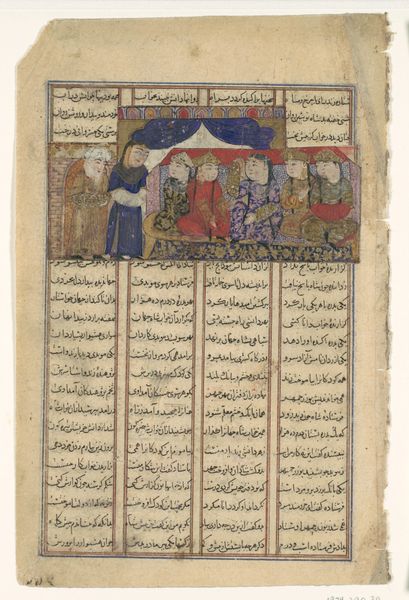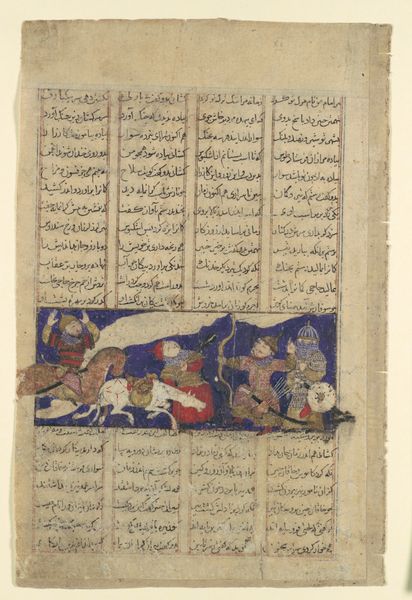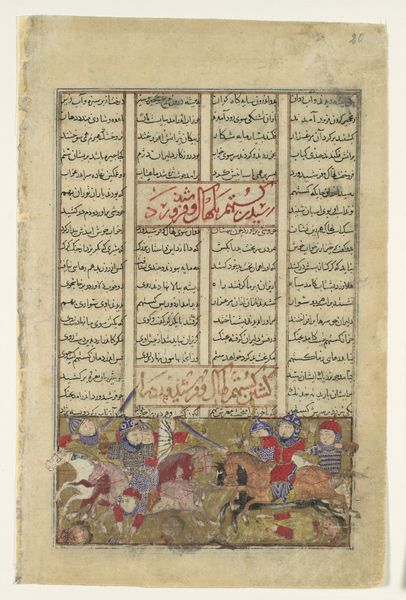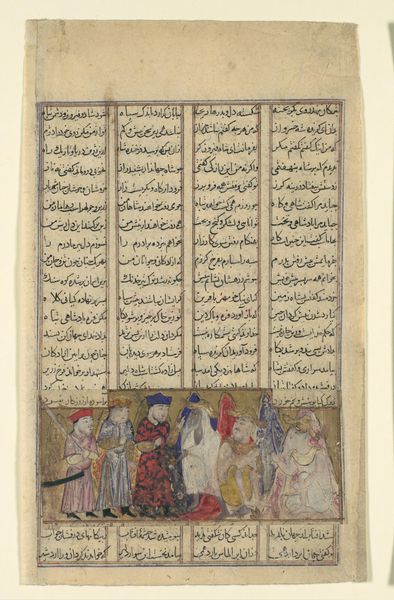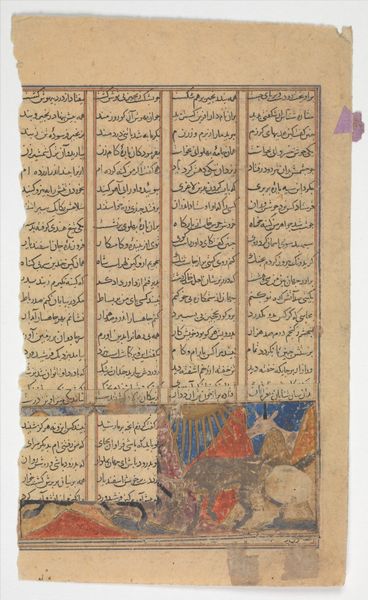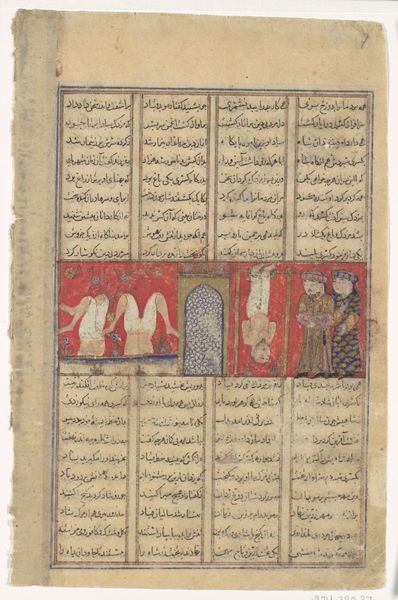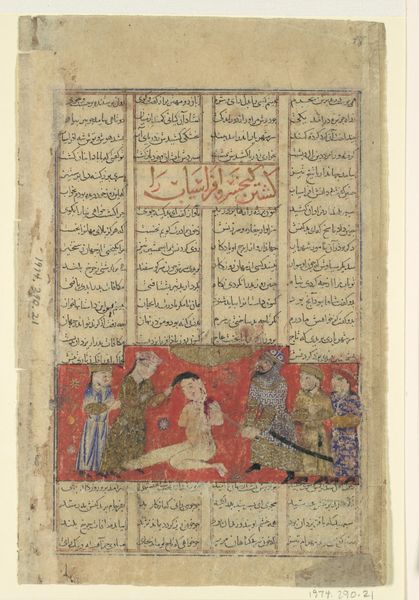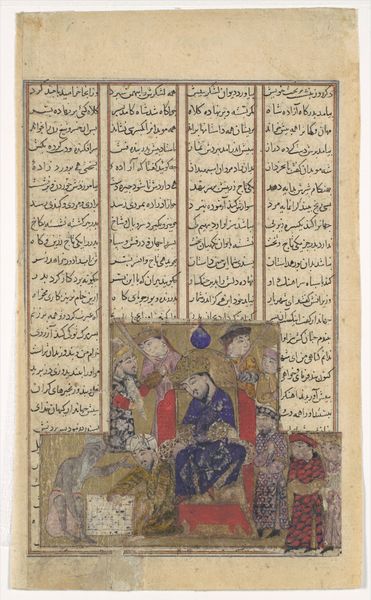
"The Combat of Khusrau Parviz and Bahram Chubina (?)", Folio from a Shahnama (Book of Kings) 1305 - 1365
0:00
0:00
painting, watercolor
#
narrative-art
#
painting
#
landscape
#
figuration
#
watercolor
#
islamic-art
#
miniature
Dimensions: Page: H. 8 1/16 in. (20.5 cm) W. 5 1/4 in. (13.3 cm) Painting: H. 1 15/16 in. (5 cm) W. 4 5/16 in. (10.9 cm)
Copyright: Public Domain
This folio from a Shahnama, or Book of Kings, was likely made in Persia, modern-day Iran, sometime after 1020. Illustrated manuscripts like this one played a crucial role in shaping Persian cultural identity. The Shahnama itself is a powerful expression of Persian kingship and moral ideals. This particular image, depicting a combat scene, would have visually reinforced these concepts for its intended audience, who were likely members of the royal court or wealthy elite. We see visual codes of power, such as the elevated status of the riders, to portray strength and authority. Looking at the historical context, the creation of illustrated manuscripts was often sponsored by the royal court or other wealthy patrons. The presence of this artwork in a Western museum like the Met raises questions about cultural exchange, colonialism, and the politics of collecting. Historians rely on textual analysis, art historical research, and knowledge of Persian culture to interpret the meaning and significance of such works. By examining the social and institutional context, we can better understand the complex role this image played in its own time, and continues to play today.
Comments
No comments
Be the first to comment and join the conversation on the ultimate creative platform.
